Historical Places
Aurangabad, the tourism capital of Maharashtra, beckons travelers from around the globe with its rich heritage and UNESCO World Heritage sites. From the awe-inspiring Ajanta and Ellora Caves to the exquisite Bibi ka Maqbara and majestic Daulatabad Fort, the city boasts a plethora of monuments waiting to be explored.
For those seeking spiritual solace, Aurangabad is home to the revered Grishneshwar Temple, one of the 12 jyotirlingas. Whether you're embarking on a family vacation, group excursion, or solo adventure, this city offers a harmonious blend of modern amenities and historical allure.
With seamless connectivity via air, road, and rail, Aurangabad ensures effortless access for travelers, promising a memorable journey at every step.
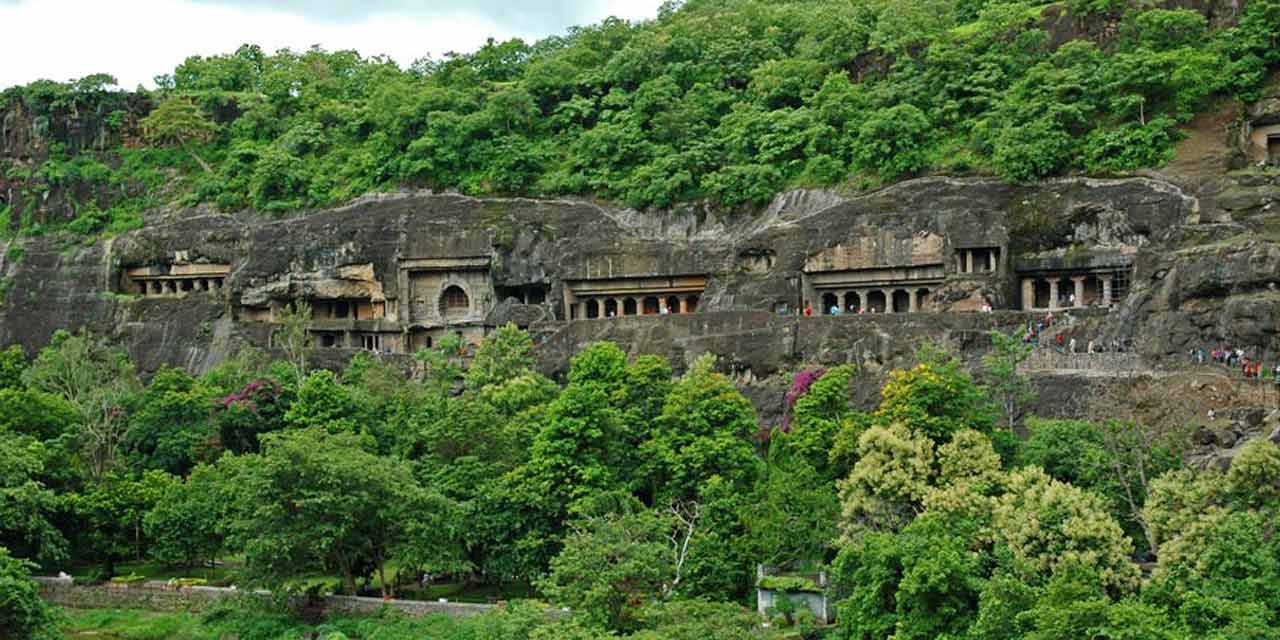
Ajanta Caves
The Ajanta Caves, a cluster of 30 caves, serve as a testament to the rich heritage of Buddhism. These caves, dedicated to both Hinayana and Mahayana sects, showcase remarkable architectural prowess, with each cave serving a distinct purpose such as residence, worship, or study. Adorned with intricate carvings, murals, and paintings depicting ancient tales, these caves offer a captivating glimpse into bygone eras.
Designated as a UNESCO World Heritage site in 1983, the Ajanta Caves comprise 24 Buddhist caves and 5 Hindu temples. Among them, Caves 1, 2, 4, 16, 17, and 26 stand out for their exceptional craftsmanship. Notably, Cave 26 houses a striking reclining statue of Lord Buddha. Plan a full day to fully immerse yourself in the wonders of these caves, which are open from 9 AM to 5 PM every day except Mondays.
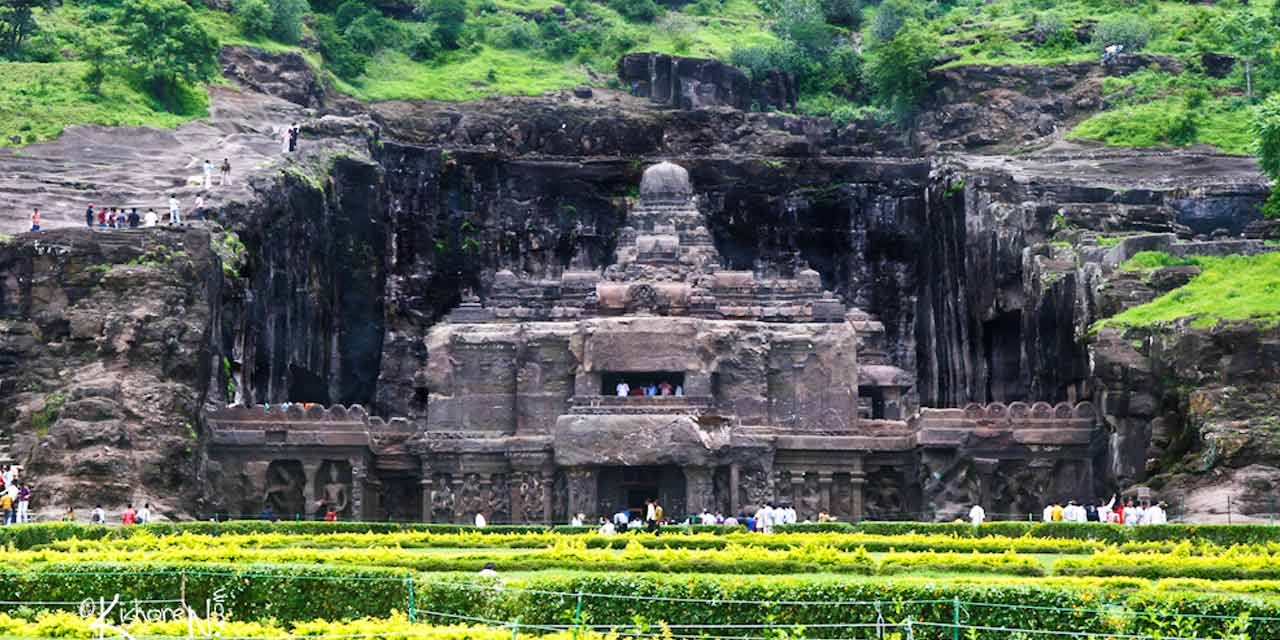
Ellora Caves
The Ellora Caves, designated as another UNESCO World Heritage site, trace their origins back to the 6th Century. Comprising 34 rock-cut caves sprawling over an area of more than 2 kilometers on the Charanandri hills, these caves, also known as Verul Caves, offer a fascinating glimpse into India's ancient civilization from A.D. 600 to 1000. Renowned for their exceptional paintings, intricate carvings, and sculptures, the Ellora Caves showcase outstanding craftsmanship that astonishes every traveler. Reflecting the diversity of Indian culture, these multi-religious caves belong to Buddhism, Hinduism, and Jainism.
Caves 1 to 12 exemplify the Mahayana philosophy of Buddhism, excavated between the 5th and 8th centuries. Representing Hindu philosophy, Caves 13 to 29 were carved from the 7th to 10th century, with Cave 16 housing the revered Kailasa temple. Lastly, Caves 30 to 34 offer insight into Jainism religion
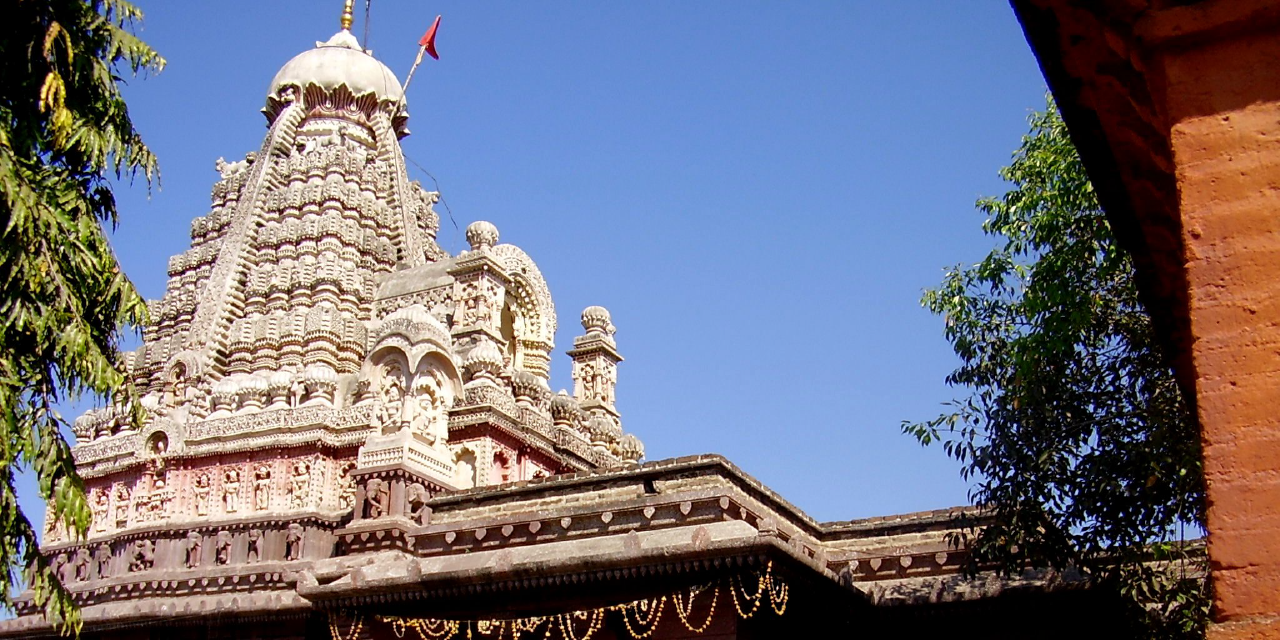
Grishneshwar Temple
The Grishneshwar Temple, a UNESCO World Heritage Site located in Ellora, is one of the 12 Jyotirlingas in India. Also known as Ghrneshwar or Dhushmeshwar Temple, this sacred site in Aurangabad is dedicated to Lord Shiva and holds significant importance for pilgrims. Grishneshwar is the smallest and the last of the 12 Jyotirlingas in India. The temple is open to all visitors, but men must be bare-chested to enter the Garbhagriha (the main sanctum housing the Shiva Linga). This is one of the few Jyotirlingas in India where devotees can touch the Shiva Linga with their bare hands.
Architecturally, the Grishneshwar Temple follows the South Indian style and is revered as one of the holiest places to visit in Aurangabad. The temple's five-tiered shikhara is intricately carved and exemplifies traditional temple architecture. Although it has been rebuilt multiple times, the current structure was constructed in the 18th century by Queen Ahilyabai Holkar of Indore.
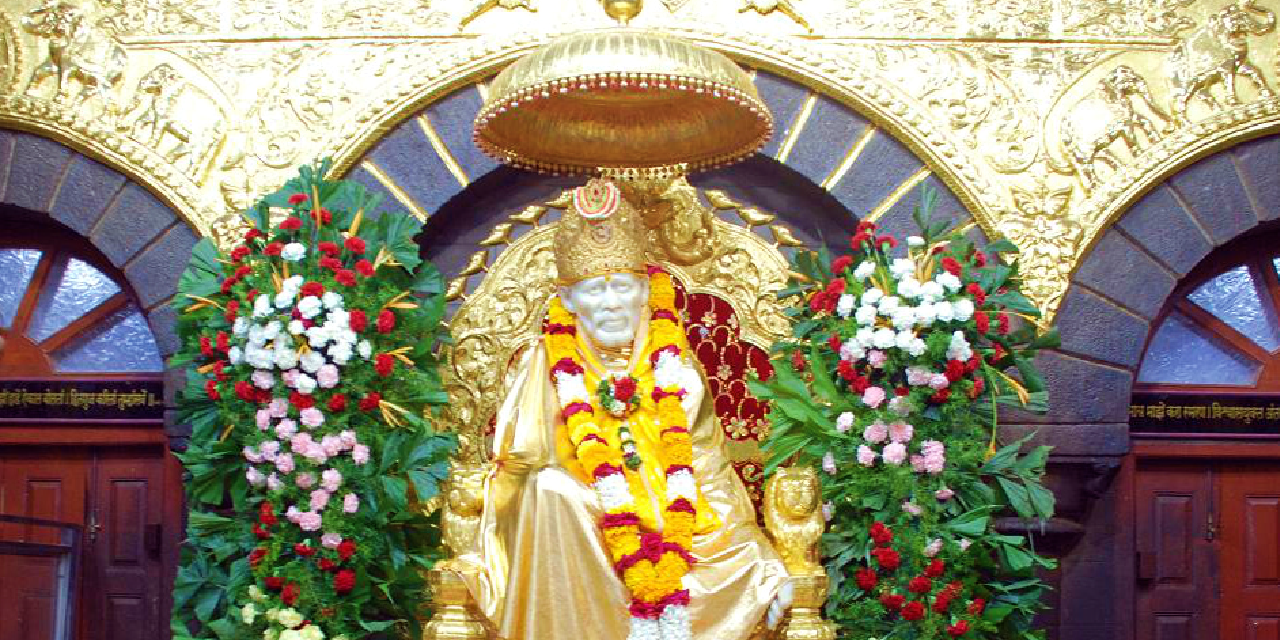
Shirdi
Shirdi, also known as Sainagar, is a city in the Indian state of Maharashtra, situated in the Rahata taluka of Ahmednagar District. It can be reached via the Ahmednagar–Malegaon State Highway No. 10, lying about 83 km (52 mi) from Ahmednagar and 15 km (9.3 mi) from Kopargaon. The city is positioned 185 km (115 mi) east of the Western Seashore line, along the heavily trafficked Ahmednagar–Manmad road.
Renowned as the home of the 19th-century saint Shirdi Sai Baba, Shirdi hosts the Shri Saibaba Sansthan Trust, one of the wealthiest temple organizations in India. Sai Baba of Shirdi (c. 1838? – 15 October 1918), also known as Shirdi Sai Baba, was an Indian spiritual master and fakir, venerated as a saint.
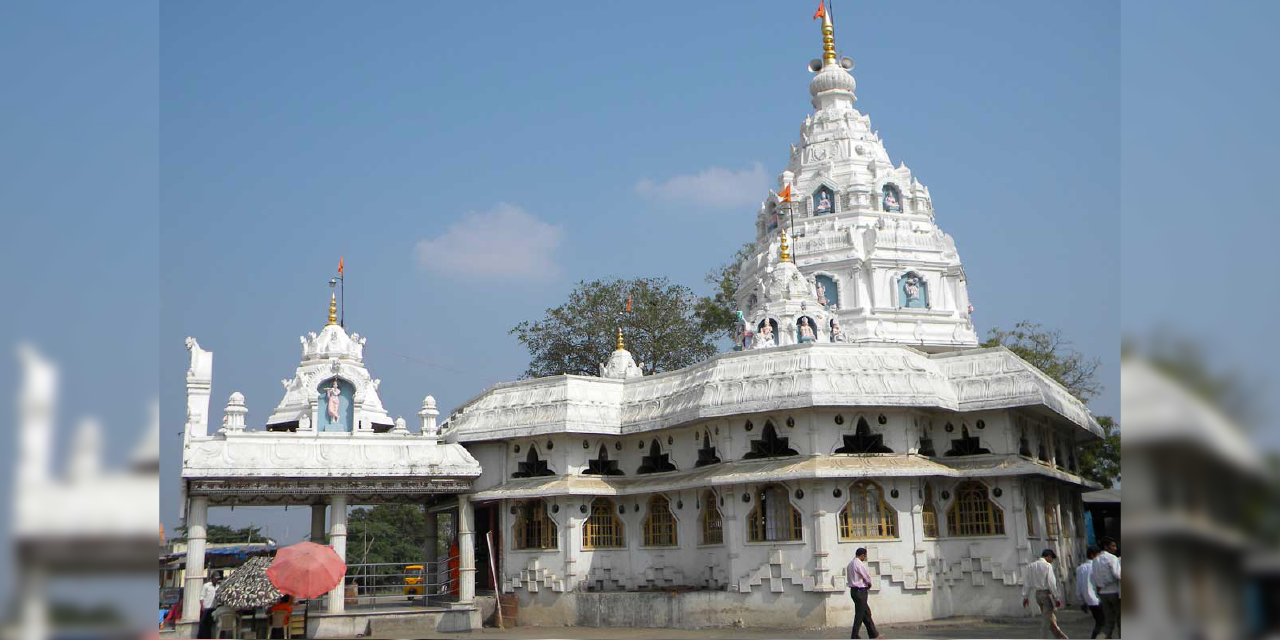
Bhadra Maruti Temple
The Bhadra Maruti Temple, located in Khuldabad near Aurangabad, is dedicated to the Hindu deity Lord Hanuman. It is one of the only three temples in India where the idol of Lord Hanuman is depicted in the Bhav Samadhi (sleeping posture), the other two being in Allahabad and Madhya Pradesh. Situated just 4 km from the renowned Ellora Caves, Bhadra Maruti attracts numerous devotees, especially on Saturdays during the months of Shravan according to the Marathi calendar.
The legend of Bhadra Maruti involves King Bhadrasen, the former ruler of Khuldabad, which was known as Bhadravati in ancient times. The king, a devout follower of Lord Ram, would sing melodious hymns in his praise. Enchanted by the king's devotion and music, Lord Hanuman descended and, entranced by the songs, lay down in a sleeping posture (Bhav Samadhi). The king requested Hanuman to remain there perpetually, blessing the faithful devotees of Lord Ram.
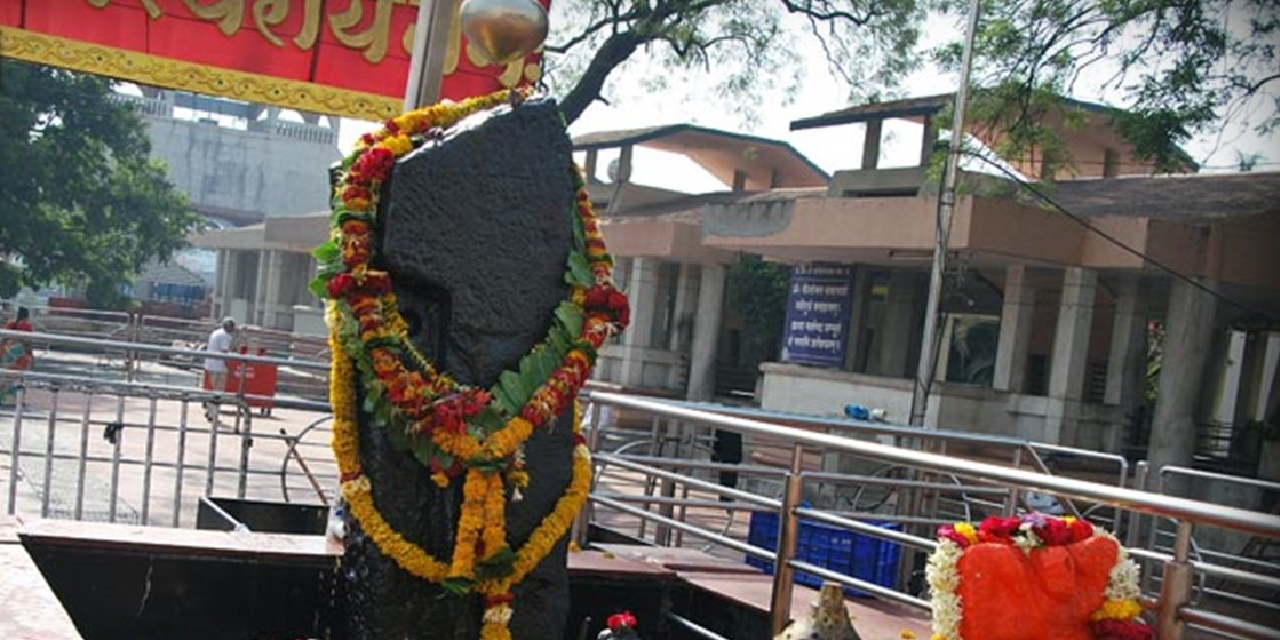
Shani Shingnapur
Shani Shingnapur is a village in the Indian state of Maharashtra, located in the Nevasa Taluka of Ahmednagar District. It is renowned for its temple dedicated to Shani, the Hindu god associated with the planet Saturn. The village lies 35 kilometers from the city of Ahmednagar. The temple is considered a jagrut devasthan (alive temple), meaning that a deity is believed to reside there. Villagers hold the belief that Shani punishes anyone who attempts theft. The deity here is a Swayambhu (self-evolved deity) that emerged from the earth as a black, imposing stone.
The statue of Lord Shanaishwara, an imposing black rock standing five and a half feet tall, is placed in an open yard without any roof. Remarkably, none of the houses, shops, or temples within a one-kilometer radius of the temple have doors or locks, due to the fear of Lord Shani's retribution. The shrine features a black rock symbolizing Shani on an open-air platform. Alongside the statue is a Trishula (trident), and a Nandi (bull) image is positioned on the south side. In front of the statue are smaller images of Shiva and Hanuman.

Mhaismal Balaji Temple
Mhaismal is a small hill station in the Aurangabad District of Maharashtra. Located at an altitude of 1067 meters, it is about 12 km from Khuldabad and approximately 40 km from Aurangabad. Like most hill stations, Mhaismal features several viewpoints, including Sunset Point, Valley View, and Necklace Point. The Valley View Point (with ticketed entry) is a sprawling plateau encircled by guard rails, offering a bird’s eye view of the lush green slopes and valleys. Necklace Point also offers a scenic view of the countryside.
Tourist attractions in Mhaismal include the ancient temple of Girijamata, a beautiful lake, and a 300 ft TV tower capable of broadcasting within a 150 km range. Additionally, an exact replica of the Balaji Temple at Tirupati is located at the top of the hill station. Mhaismal attracts visitors especially during the monsoons, when it is covered in greenery, offering spectacular views of the surrounding valleys.
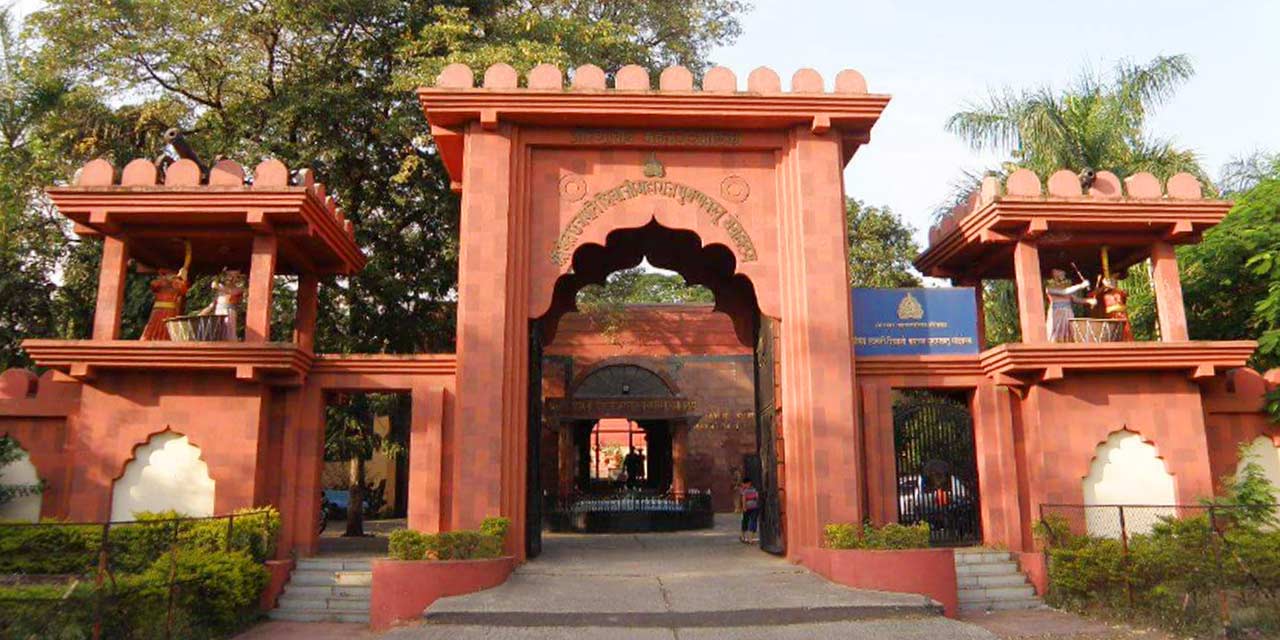
Chhatrapati Shivaji Museum
The Chhatrapati Shivaji Museum stands as a tribute to the illustrious legacy of the Maratha kings, particularly Chhatrapati Shivaji Maharaj. Comprising six halls, this museum offers a comprehensive insight into Shivaji's life and achievements.Within its halls, visitors can marvel at a diverse array of exhibits, including photographs, ancient weaponry such as swords, shields, and rifles, as well as a remarkable 500-year-old war suit. Additionally, the museum houses a collection of coins, artifacts like a 400-year-old Paithani sari, and even a handwritten Quran once owned by Emperor Aurangzeb.
Conveniently situated near other attractions like Himayat Bagh and Salim Ali Sarovar, the museum is a mere 5 km away from Aurangabad railway station. It warmly welcomes visitors from 10:30 AM to 5 PM, providing an enriching experience that celebrates the rich heritage of the Maratha dynasty.

Daulatabad Fort
Originally built by Yadava King Bhillama in 1187, Daulatabad Fort has witnessed numerous renovations and enhancements under various rulers, including the Mughals and the Ahmednagar Sultanate. Also known as Deogiri Fort, this grand citadel is perched atop a hill in the village of Daulatabad.Famed for its formidable defense mechanisms, Daulatabad Fort boasted impenetrable fortifications, including fortified walls, massive gates with iron spikes, walkways, moats, bastions, and turrets, forming an impregnable barrier.
Constructed on a conical granite rock formation, the fort showcases meticulous town planning, water management systems, architectural marvels, and military strategies. Among its notable structures are Saraswati Bawdi, Bharat Mata Mandir, Rang Mahal, Chand Minar, Chinni Mahal, and Baradari.
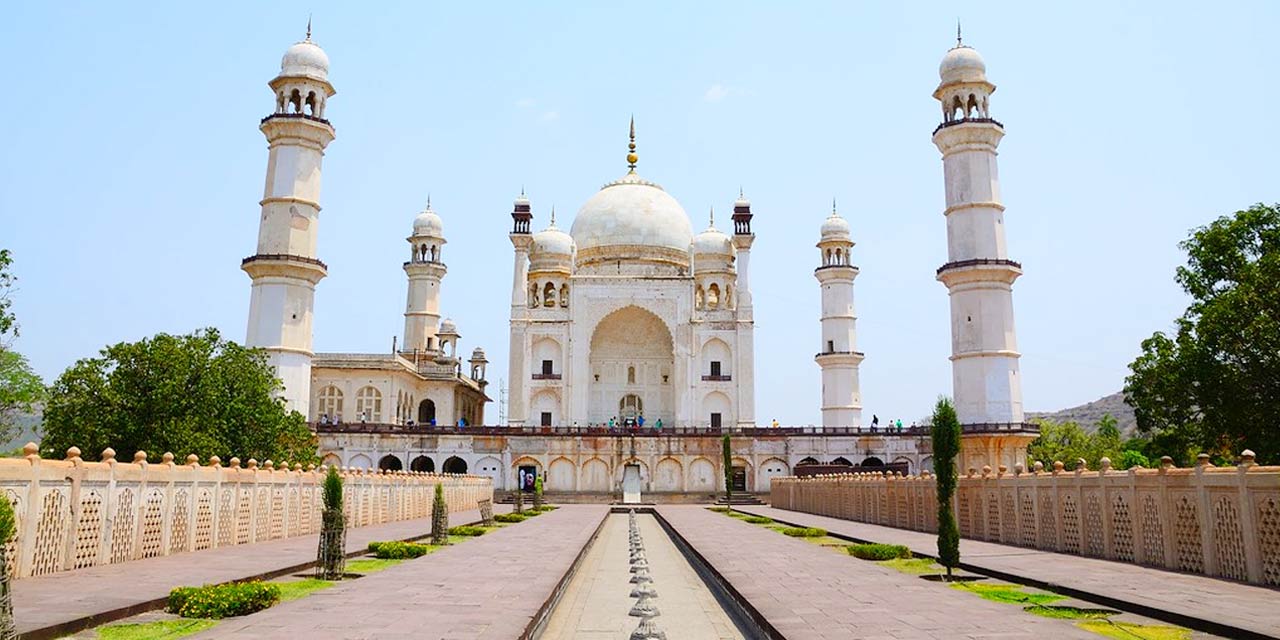
Bibi Ka Maqbara
If you're under the impression that the Taj Mahal is the only monument commissioned by a king for his wife, a visit to Bibi Ka Maqbara will change your perspective. Built in 1661 by Emperor Aurangzeb in memory of his wife Rabia- Ul – Daurani (also known as Dilras Banu Begum), who passed away in 1657, this enchanting mausoleum is a sight to behold.
Often referred to as the Taj of the Deccan, Bibi Ka Maqbara bears a striking resemblance to its counterpart in Agra. Set against a backdrop of majestic mountains, this marble mausoleum boasts intricate carvings and is among the most captivating structures in the city. Open from 8 AM to 8 PM, it stands as a cherished tourist destination in Aurangabad.

Panchakki
Panchakki may not be your typical tourist destination, but it offers a unique glimpse into history and innovation. Constructed in 1695 by Turktaz Khan, a noble serving under Nizam-ul-Mulk Asaf Jah, this water mill complex exemplifies the scientific ingenuity of ancient India.
The primary function of Panchakki was to harness water from a mountain reservoir, showcasing early advancements in water technology. In addition to the water mill, the complex features a madrasa, minister's residence, Sarai (inn), zananas (women's quarters), and a mosque. Moreover, visitors can explore a library boasting over 2500 books in various languages, including Persian and Arabic. While perhaps unconventional, Panchakki offers a fascinating blend of historical significance and architectural marvels, making it a noteworthy stop for those intrigued by India's rich heritage.
